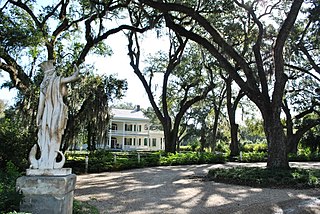
West Feliciana Parish is a civil parish located in the U.S. state of Louisiana. At the 2020 census, the population was 15,310. The parish seat is St. Francisville. The parish was established in 1824.
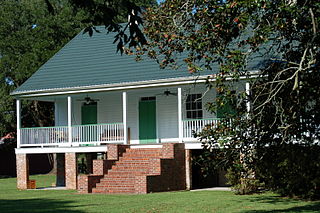
West Baton Rouge Parish is one of the sixty-four parishes in the U.S. state of Louisiana. Established in 1807, its parish seat is Port Allen. With a 2020 census population of 27,199 residents, West Baton Rouge Parish is part of the Baton Rouge metropolitan statistical area.

St. Francisville is a town in and the parish seat of, West Feliciana Parish, Louisiana, United States. The population was 1,557 at the 2020 census. It is part of the Baton Rouge metropolitan statistical area.
Port Hudson is an unincorporated community in East Baton Rouge Parish, Louisiana, United States. Located about 20 miles (32 km) northwest of Baton Rouge, it is known primarily as the location of an American Civil War battle, the siege of Port Hudson, in 1863.

John Austin Wharton was a lawyer, plantation owner, and Confederate general during the American Civil War. He was one of the Confederacy's best tactical cavalry commanders.

Thomas Overton Moore was an attorney and politician who was the 16th Governor of Louisiana from 1860 until 1864 during the American Civil War. Anticipating that Louisiana's Ordinance of Secession would be passed in January 1861, he ordered the state militia to seize all U.S. military posts.
This is a list of Confederate government Civil War military units, not raised by any state.
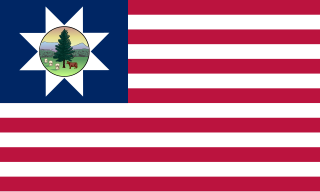
The 7th Vermont Infantry Regiment was a three years' infantry regiment in the Union Army during the American Civil War. It served in the Western Theater, predominantly in Louisiana and Florida, from February 1862 to March 1866. It was the longest serving Vermont regiment during the war.

The Battle of Baton Rouge was a ground and naval battle in the American Civil War fought in East Baton Rouge Parish, Louisiana, on August 5, 1862. The Union victory halted Confederate attempts to recapture the capital city of Louisiana.

Hamilton Prioleau Bee was an American politician in early Texas; he was secretary of the Texas Senate in 1846. He served nearly 10 years as representative to the state house beginning in 1849, and for one term as Speaker of the Texas House of Representatives.
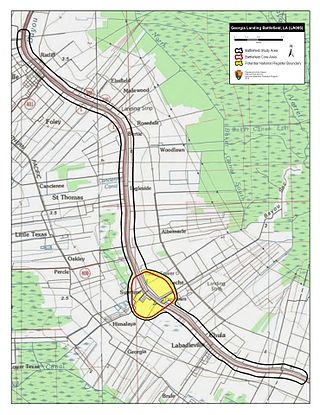
The Battle of Georgia Landing or Battle of Labadieville was fought between a Union Army force led by Brigadier General Godfrey Weitzel and a Confederate States Army force commanded by Brigadier General Alfred Mouton near Labadieville, Assumption Parish, Louisiana, during the American Civil War. After a sharp clash, the Union troops compelled Mouton's outnumbered force to retreat.
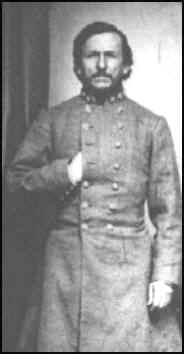
Leroy Augustus Stafford Sr., was a brigadier general in the Confederate Army during the American Civil War.
The Pointe Coupee Artillery was a Confederate Louisiana artillery unit in the American Civil War made up primarily of men from the parishes of Pointe Coupee, East Baton Rouge, Livingston and other surrounding parishes as well as a large number of men from New Orleans.
The following list is a bibliography of American Civil War Confederate military unit histories and are generally available through inter-library loan. More details on each book are available at WorldCat. For an overall national view, see Bibliography of the American Civil War. For histories of the Union, see Bibliography of American Civil War Union military unit histories. For a guide to web sources see: Carter, Alice E.; Jensen, Richard. The Civil War on the Web: A Guide to the Very Best Sites—Completely Revised and Updated (2003).
William Walter Leake was an officer in the Confederate States Army in the American Civil War. He was also an attorney, a member of the Louisiana State Senate, a circuit court judge, a bank president, and a newspaper publisher. He is best known for his role in burying a Union Navy officer in Louisiana, an event now commemorated as "The Day the War Stopped".

Miles' Legion was a unit of the Confederate Army during the American Civil War. It was commanded by Colonel William R. Miles. The unit was officially named the 32nd Louisiana Infantry Regiment but it was never referred to by that name. The legion fought at the Battle of Plains Store and the Siege of Port Hudson. Captured at Port Hudson, the men were paroled, and the legion was declared exchanged in fall 1863. Many of the exchanged men never returned to duty. Those who did return joined Gober's Mounted Infantry Regiment or the 15th Louisiana Sharpshooter Battalion.
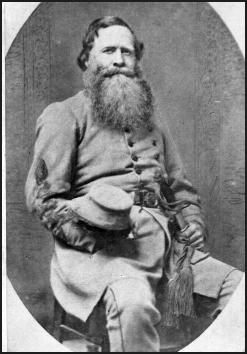
The 28th Louisiana Infantry Regiment was an infantry regiment from Louisiana that served in the Confederate States Army during the American Civil War. It was also known as Gray's Regiment to differentiate it from the 28th (Thomas') Louisiana Infantry Regiment, which was also numbered as 29th. Raised in 1862 it served in the Trans-Mississippi Theater and along the Gulf Coast until it disbanded in 1865.

The 4th United States Colored Cavalry Regiment, originally designated the 1st Cavalry (Corps d'Afrique), was an African American cavalry regiment that served in the Union Army during the American Civil War.












